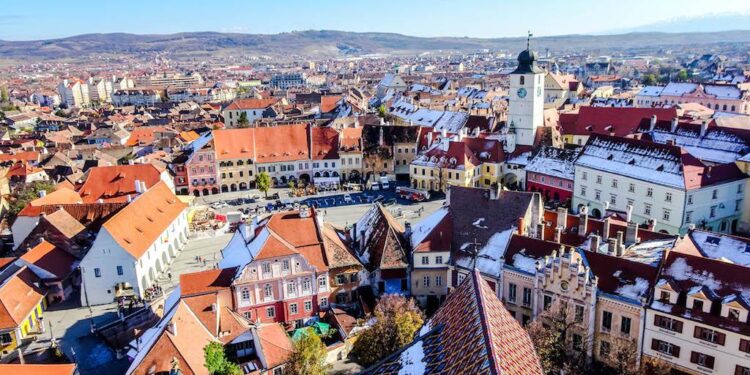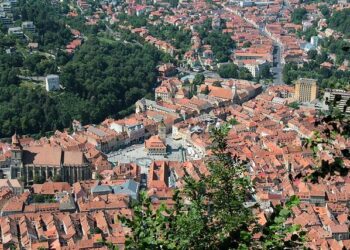Romania has made a significant stride in its pursuit of a clean energy future, marking a pivotal moment in the country’s commitment to sustainable development. In a series of bold initiatives and policy reforms unveiled this week, Romanian authorities have accelerated efforts to reduce carbon emissions and boost renewable energy production. This move not only aligns Romania with European Union climate goals but also positions the nation as a rising leader in the region’s green energy transition. The latest developments signal a transformative shift in Romania’s energy landscape, with wide-reaching implications for its economy and environment.
Romania Accelerates Renewable Energy Projects to Cut Carbon Emissions
Romania is rapidly expanding its portfolio of clean energy projects, aiming to significantly lower its carbon footprint by 2030. Government incentives combined with private sector investments are fueling a surge in solar, wind, and hydroelectric power installations across the country. These initiatives not only promise to reduce greenhouse gas emissions but also to create thousands of green jobs while enhancing energy security. Environmental groups have praised this decisive commitment as a model for Eastern Europe.
Key developments in the past year include:
- Over 1,000 MW of new wind farms operational or nearing completion
- Expansion of solar parks in the south and southeast regions
- Modernization of hydroelectric plants to increase efficiency
| Energy Source | Capacity Added (MW) | Expected Carbon Reduction (%) |
|---|---|---|
| Wind | 1,200 | 25% |
| Solar | 850 | 18% |
| Hydroelectric | 400 | 10% |
Government Incentives and Private Sector Collaboration Drive Green Innovation
Romania’s ambitious leap toward sustainable energy is being powered by a robust framework of public support and agile private sector partnerships. The government has unveiled a suite of financial incentives aimed at accelerating the deployment of renewable technologies, including tax credits, grants, and low-interest loans for green projects. This proactive approach has not only lowered entry barriers for startups but also enticed established corporations to invest heavily in solar, wind, and hydroelectric ventures across the country. By fostering a climate of collaboration, policymakers are ensuring that regulatory momentum aligns with cutting-edge market solutions, setting the stage for a resilient clean energy ecosystem.
In tandem with government initiatives, private enterprises have leveraged innovative business models and technological expertise to complement public efforts. Key industry players are forming strategic alliances, pooling resources and sharing data to maximize project efficiency and reduce costs. Notably, several pilot programs focusing on smart grids and energy storage have sprung up, showcasing Romania’s commitment to integrating modern infrastructure with renewable generation. The following table highlights some of the pivotal collaborations and their impact on the renewable energy landscape:
| Partnership | Focus Area | Impact |
|---|---|---|
| EcoGreen & Ministry of Energy | Solar Farm Development | Increased capacity by 150 MW |
| VoltPower & Local Municipalities | Smart Grid Implementation | Improved grid stability by 30% |
| HydroGen Solutions & EU Funds | Micro-Hydroelectric Plants | Generated 20 GWh annually |
- Financial incentives driving rapid project initiation
- Industry-government collaborations ensuring regulatory support
- Innovative technologies accelerating clean energy integration
Experts Urge Expansion of Grid Infrastructure to Support Clean Energy Growth
As Romania intensifies its commitment to renewable energy sources, industry experts emphasize the urgent necessity to enhance the national grid infrastructure. Current systems, designed during an era dominated by fossil fuels, are ill-equipped to manage the increasing influx of intermittent energy from wind, solar, and other renewables. Upgrading the grid will not only improve energy reliability but also facilitate better integration of decentralized power generation, enabling Romania to meet its ambitious clean energy targets more effectively.
Key recommendations from specialists include:
- Smart grid technologies to optimize energy distribution and reduce losses
- Expansion of cross-border interconnections for improved energy exchange within the region
- Investment in energy storage solutions to balance supply fluctuations
- Regulatory reforms to encourage private sector participation in grid modernization
| Infrastructure Aspect | Current Status | Projected Upgrade by 2030 |
|---|---|---|
| Transmission lines (km) | 12,500 | 16,000 |
| Smart grid adoption (%) | 15% | 70% |
| Energy storage capacity (MWh) | 50 | 500 |
The Way Forward
As Romania accelerates its transition to renewable energy, the nation positions itself at the forefront of Eastern Europe’s clean energy movement. With ambitious projects and strategic investments underway, Romania’s commitment signals a pivotal shift toward sustainability and energy independence. While challenges remain, the progress made marks a significant step in reducing carbon emissions and fostering economic growth, setting a precedent for the region’s green energy future.
















